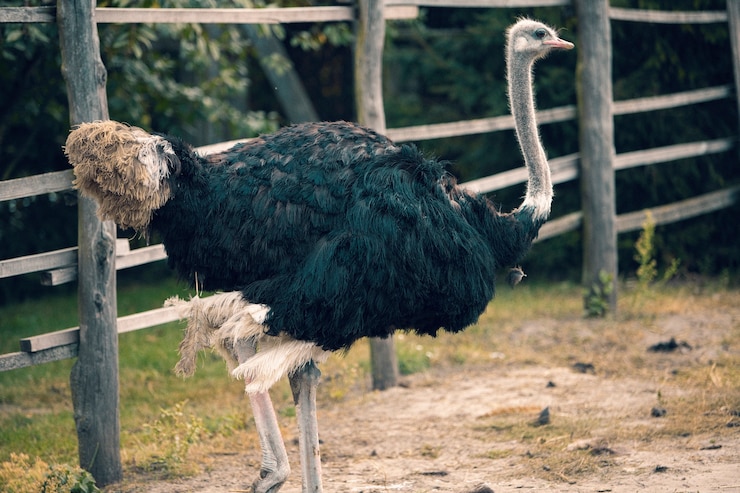Ostrich farming has gained significant popularity in South Africa due to the country’s favorable climate and thriving market demand for ostrich-related products. If you are considering venturing into ostrich farming, it’s crucial to be well-informed about the industry’s intricacies and requirements. In this article, we will explore ten key factors you should know before embarking on ostrich farming in South Africa.
- Extensive Space Requirements: Ostriches require vast open spaces to thrive and exhibit their natural behavior. It is recommended to have at least 2 to 4 hectares (5 to 10 acres) of land per ostrich to allow for sufficient grazing and nesting areas.
- Knowledge and Experience: Prior knowledge and experience in animal farming, specifically with large birds, will be beneficial. Familiarize yourself with ostrich behavior, health management, and breeding techniques through training programs or by working on an established ostrich farm.
- Legal and Regulatory Considerations: Ensure compliance with all legal and regulatory requirements for ostrich farming in South Africa. Obtain the necessary permits, licenses, and registrations from local agricultural authorities to avoid potential legal issues.
- Adequate Infrastructure: Invest in suitable infrastructure, including sturdy fencing to prevent ostriches from escaping and protecting them from predators. Construct well-ventilated shelters or sheds for shelter, nesting, and securing birds during adverse weather conditions.
- Feeding and Nutrition: Ostriches have specific dietary needs, primarily consisting of a balanced diet rich in proteins, vitamins, and minerals. Consult with experts or veterinarians to create a nutritionally balanced feed plan that meets the specific requirements of ostriches at different growth stages.
- Breeding and Incubation: Understanding the ostrich breeding process is essential for successful ostrich farming. Familiarize yourself with mating behavior, egg collection, and incubation techniques. Ostrich eggs require precise temperature and humidity control during incubation to ensure optimal hatch rates.
- Disease Management: Ostriches are susceptible to various diseases, including avian influenza, Newcastle disease, and parasites. Implement strict biosecurity measures, maintain vaccination protocols, and work closely with veterinarians to prevent and manage disease outbreaks effectively.
- Market Research: Conduct thorough market research to understand the demand and potential profitability of ostrich farming in South Africa. Identify potential buyers for ostrich meat, feathers, leather, and other by-products. Establish strategic partnerships to ensure a reliable market for your products.
- Financial Planning: Develop a comprehensive business plan that includes detailed financial projections. Consider all costs associated with land acquisition, infrastructure development, feed, healthcare, marketing, and personnel. Adequate financial planning is crucial for the long-term sustainability of your ostrich farming venture.
- Risk Assessment: Evaluate the potential risks involved in ostrich farming, including market fluctuations, disease outbreaks, and climatic conditions. Prepare contingency plans and have adequate insurance coverage to mitigate these risks and protect your investment.
Ostrich farming in South Africa can be a lucrative venture if approached with careful planning, knowledge, and commitment. By considering the ten key factors mentioned above, you will be better equipped to navigate the challenges and maximize the potential benefits of this unique farming opportunity. Remember to stay updated with industry trends and continuously educate yourself to ensure the long-term success of your ostrich farming enterprise.








